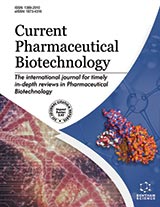Abstract
Background: Synthetic opioids are compounds that were created to act on the opioid receptors. Novel synthetic opioids include various analogs of fentanyl (e.g., acetylfentanyl, acryloylfentanyl, carfentanil, furanylfentanyl, 4-fluorobutyrylfentanyl or ocfentanil) and newly emerging non-fentanyl compounds with different chemical structures, such as AH-7921, MT-45, and U-47700. In the last years, these drugs have rapidly emerged on the recreational drug market, and their abuse has been increasing worldwide. Due to the high potency and the low dose required to produce desired effects, the risk of overdose for these compounds including severe health implications, is quite high. Several fatal intoxication cases related to the abuse of synthetic opioids have recently been reported in the literature.
Conclusion: As a consequence, the detection of these compounds in biological samples is crucial in order to get a better understanding of their concentration and distribution in body fluids. We overviewed the analytical approaches for the investigation of synthetic opioids in postmortem samples reported in the literature, with special emphasis given to cases of lethal intoxication.
Keywords: New psychoactive substances, synthetic opioids, fentanyl analogues, U-47700, AH-7941, intoxication, postmortem.
Graphical Abstract
Current Pharmaceutical Biotechnology
Title:Analytical Approaches in Fatal Intoxication Cases Involving New Synthetic Opioids
Volume: 19 Issue: 2
Author(s): Enrico Gerace*, Alberto Salomone and Marco Vincenti
Affiliation:
- Centro Regionale Antidoping e di Tossicologia ,Italy
Keywords: New psychoactive substances, synthetic opioids, fentanyl analogues, U-47700, AH-7941, intoxication, postmortem.
Abstract: Background: Synthetic opioids are compounds that were created to act on the opioid receptors. Novel synthetic opioids include various analogs of fentanyl (e.g., acetylfentanyl, acryloylfentanyl, carfentanil, furanylfentanyl, 4-fluorobutyrylfentanyl or ocfentanil) and newly emerging non-fentanyl compounds with different chemical structures, such as AH-7921, MT-45, and U-47700. In the last years, these drugs have rapidly emerged on the recreational drug market, and their abuse has been increasing worldwide. Due to the high potency and the low dose required to produce desired effects, the risk of overdose for these compounds including severe health implications, is quite high. Several fatal intoxication cases related to the abuse of synthetic opioids have recently been reported in the literature.
Conclusion: As a consequence, the detection of these compounds in biological samples is crucial in order to get a better understanding of their concentration and distribution in body fluids. We overviewed the analytical approaches for the investigation of synthetic opioids in postmortem samples reported in the literature, with special emphasis given to cases of lethal intoxication.
Export Options
About this article
Cite this article as:
Gerace Enrico *, Salomone Alberto and Vincenti Marco, Analytical Approaches in Fatal Intoxication Cases Involving New Synthetic Opioids, Current Pharmaceutical Biotechnology 2018; 19 (2) . https://dx.doi.org/10.2174/1389201019666180405162734
| DOI https://dx.doi.org/10.2174/1389201019666180405162734 |
Print ISSN 1389-2010 |
| Publisher Name Bentham Science Publisher |
Online ISSN 1873-4316 |
 56
56 3
3 1
1
- Author Guidelines
- Bentham Author Support Services (BASS)
- Graphical Abstracts
- Fabricating and Stating False Information
- Research Misconduct
- Post Publication Discussions and Corrections
- Publishing Ethics and Rectitude
- Increase Visibility of Your Article
- Archiving Policies
- Peer Review Workflow
- Order Your Article Before Print
- Promote Your Article
- Manuscript Transfer Facility
- Editorial Policies
- Allegations from Whistleblowers


























